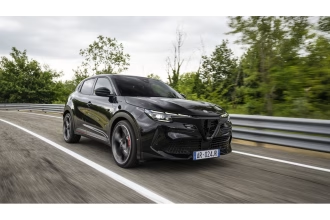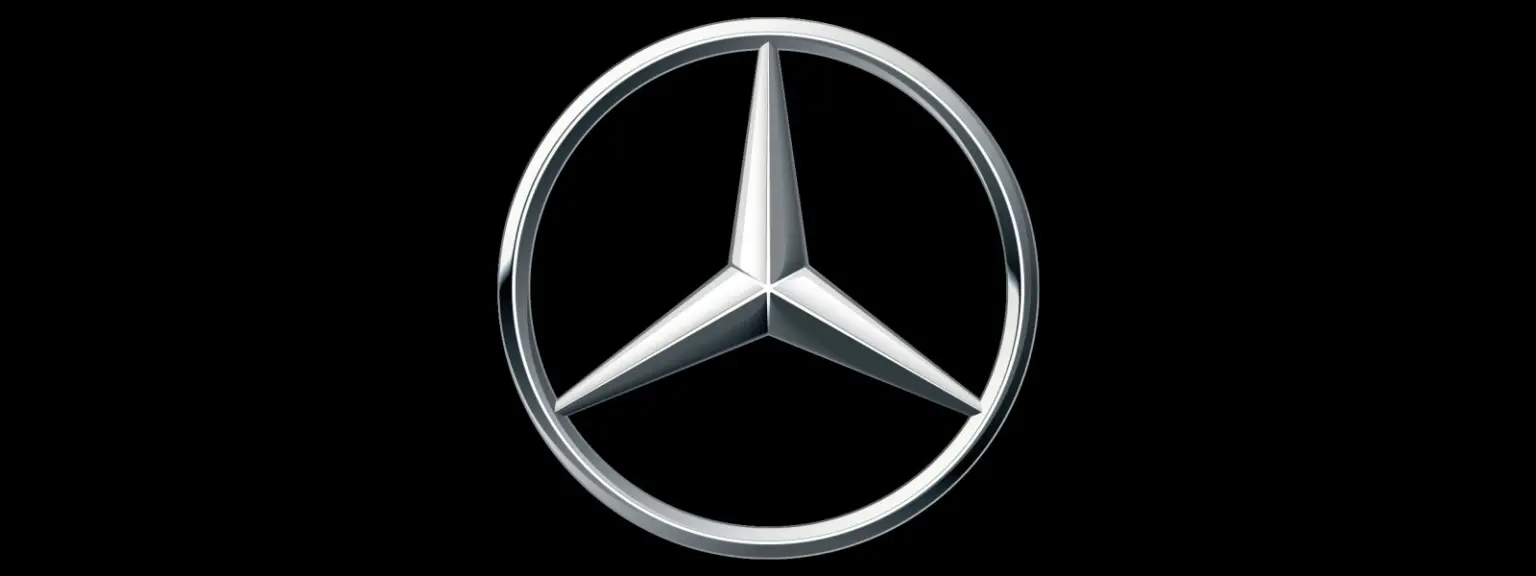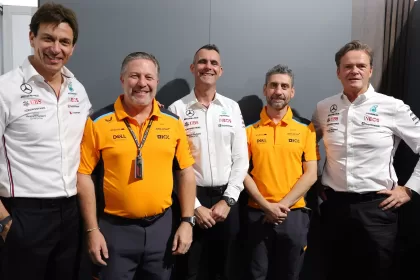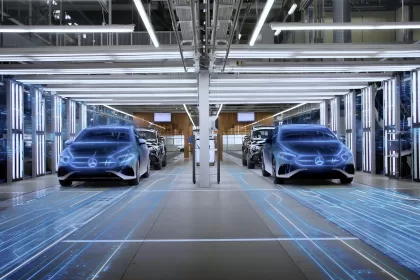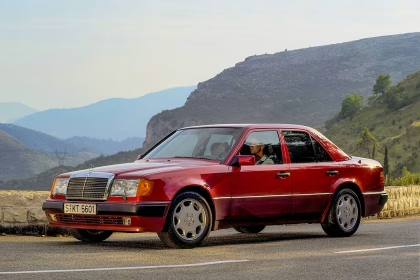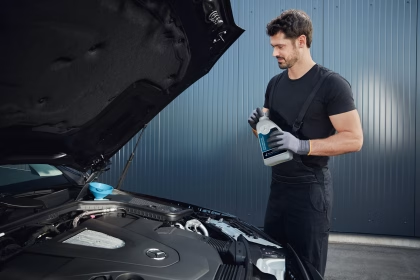- Performance: Q1 adjusted Return on Sales (RoS) reached 9.0% (Q1 2023: 14.8%) at Mercedes-Benz Cars and 16.3% at Mercedes-Benz Vans (Q1 2023: 15.6%); Mercedes-Benz Mobility adjusted Return on Equity (RoE) at 8.5% (Q1 2023: 15.6%).
- New products: World premieres for the electric G-Class1 and all new G-Class; EQS model upgrades; AMG GT Coupes and E-Class AMG models unveiled.
- Share buyback update: By the third quarter 2024 buybacks are expected to reach a total of €4 billion and to reach the targeted €7 billion in Q1 2025 before the Annual General Meeting.
- Outlook unchanged: Mercedes-Benz Group revenue in 2024 seen remaining at the prior-year level; Group EBIT and Free Cash Flow from the Industrial Business expected slightly below prior-year level; Mercedes-Benz Cars adjusted Return on Sales (RoS) expected at 10% – 12%; Mercedes-Benz Vans adjusted Return on Sales seen at 12% – 14% and Mercedes-Benz Mobility adjusted Return on Equity seen at 10% – 12%.
Mercedes-Benz Group AG reported Free Cash Flow from the industrial business at a solid €2.23 billion (Q1 2023: €2.16 billion) in the first quarter with strong cash conversion including positive working capital developments. Group Earnings Before Interest and Taxes (EBIT) totalled €3.9 billion (Q1 2023: €5.5 billion), reflecting lower raw material prices, tight cost control and a strong performance at Mercedes-Benz Vans. These effects partially offset lower sales at Mercedes-Benz Cars where supplier bottlenecks and model changeovers in the Top-End segment also led to a less favourable model mix. Group revenue came in at €35.9 billion (Q1 2023: €37.5 billion).
“Mercedes-Benz delivered a solid Free Cash Flow in the first quarter thanks to our disciplined go-to-market approach, our desirable products and despite the volatile economic environment and external challenges. While we remain vigilant about the global macroeconomic and geopolitical outlook, we confirm our full-year financial targets for 2024.”
Harald Wilhelm, Chief Financial Officer of Mercedes-Benz Group AG
| Mercedes-Benz Group | Q1 2024 | Q1 2023 | Change 24/23 |
| Revenue* | 35,873 | 37,516 | -4.4% |
| Earnings before Interest and Taxes (EBIT)* | 3,863 | 5,504 | -29.8% |
| Earnings before Interest and Taxes (EBIT) adjusted* | 3,598 | 5,422 | -33.6% |
| Net profit/loss* | 3,025 | 4,011 | -24.6% |
| Free Cash Flow (industrial business)* | 2,233 | 2,164 | +3.2% |
| Earnings per share (EPS) in EUR | 2.86 | 3.69 | -22.5% |
*in millions of €
Investments, Free Cash Flow, Net Liquidity
The Free Cash Flow from the Industrial Business in the first quarter reached €2.23 billion (Q1 2023: €2.16 billion), supported by an adjusted Cash Conversion rate of 1.0 at Mercedes-Benz Cars.
The Net Liquidity from the Industrial Business rose by 6% to a strong and very comfortable level of €33.6 billion (end of 2023: €31.7 billion). This included a share buyback of approximately €300 million in the first quarter. The Group’s investments in property, plant and equipment in the first quarter totalled €0.7 billion (Q1 2023: €0.8 billion). Research and development expenditure fell to €2.2 billion (Q1 2023: €2.5 billion).
Divisional results
Earnings Before Interest and Taxes at Mercedes-Benz Cars reached €2.5 billion (Q1 2023: €4.1 billion) and resulted in an adjusted Return on Sales of 9.0% (Q1 2023: 14.8%) mainly due to a temporary decline in volumes and model transitions in the Top-End segment as well as higher lifecycle management costs to keep products at the cutting edge. Top-End vehicles were constrained by model changeovers of the G-Class as well as the Mercedes-AMG derivatives of the E-Class and GLC, as well as supply-chain bottlenecks. Mercedes-Benz Cars sales reached 463,000 units (-8%) in the first quarter, with solid results in all regions except Asia. Despite a decline in S-Class sales, it remains the undisputed leader in all key regions.
Overall, pricing remained at a high level in Q1. Sales are expected to increase in the coming quarters with the Top-End vehicle mix expected to improve in the second half of the year. The EV adoption rate has slowed across the industry. In the transition from ICE to BEV vehicles, Mercedes-Benz plug-in hybrids are expected to play an important role. In Q1 Mercedes-Benz initiated BEAT26, an efficiency program to lower material costs in procurement, in close collaboration with its suppliers.
| Mercedes-Benz Cars | Q1 2024 | Q1 2023 | Change 24/23 |
| Sales in units | 462,978 | 503,483 | -8.0% |
| – thereof xEV | 90,177 | 91,698 | -1.7% |
| – thereof BEV | 47,521 | 51,639 | -8.0% |
| Share of xEV in unit sales in % | 19.5 | 18.2 | – |
| Revenue* | 25,713 | 27,812 | -7.5% |
| Earnings Before Interest and Taxes (EBIT)* | 2,456 | 4,148 | -40.8% |
| Earnings Before Interest and Taxes (EBIT) adjusted* | 2,323 | 4,113 | -43.5% |
| Return on Sales (RoS) in % | 9.6 | 14.9 | -5.3%pts |
| Return on Sales (RoS) adjusted in % | 9.0 | 14.8 | -5.8%pts |
| Cash Flow Before Interest and Taxes (CFBIT)* | 2,297 | 2,981 | -22.9% |
| Cash Flow Before Interest and Taxes (CFBIT) adjusted* | 2,341 | 3,020 | -22.5% |
| Cash Conversion Rate adjusted | 1.0 | 0.7 | – |
*in millions of €
Mercedes-Benz Vans posted a strong start into the year with healthy net pricing supported by strong product substance leading to very good financial results. The adjusted Return on Sales for Mercedes-Benz Vans rose to 16.3% (Q1 2023: 15.6%) thanks to increased global sales (+7%) driven by positive product structure, especially from commercial Vans (+11%). Regionally, the important markets China (+27%) and the United States (+15%) contributed to the strong Q1 sales. Revenue increased by 6% to €4.9 billion (Q1 2023: €4.6 billion) in the first quarter and the Earnings Before Interest and Taxes increased by 22% to €933 million (Q1 2023: €762 million). BEV sales declined but are expected to rise with the full availability of the newly launched facelifts of the EQV, eVito and the new eSprinter.
| Mercedes-Benz Vans | Q1 2024 | Q1 2023 | Change 24/23 |
| Sales in units | 105,425 | 98,885 | +6.6% |
| Share of xEV in unit sales in % | 2.8 | 3.6 | – |
| Revenue* | 4,893 | 4,615 | +6.0% |
| Earnings before Interest and Taxes (EBIT)* | 933 | 762 | +22.4% |
| Earnings before Interest and Taxes (EBIT) adjusted* | 800 | 719 | +11.3% |
| Return on Sales (RoS) in % | 19.1 | 16.5 | +2.6%pts |
| Return on Sales (RoS) adjusted in % | 16.3 | 15.6 | +0.7%pts |
| Cash Flow Before Interest and Taxes (CFBIT)* | 643 | 410 | +56.8% |
| Cash Flow Before Interest and Taxes (CFBIT) adjusted* | 688 | 450 | +52.9% |
| Cash Conversion Rate adjusted | 0.9 | 0.6 | – |
*in millions of €
Compared to the first quarter of the previous year, Mercedes-Benz Mobility almost doubled its new business volume for BEVs to €2.0 billion (Q1 2023: €1.2 billion). Overall, at the end of March 2024, the contract volume amounted to €134.7 billion and is thus at the same level as year-end 2023 (FY 2023: €135.0 billion). At €14.8 billion, the new business of Mercedes-Benz Mobility is also on prior-year level (Q1 2023: €14.7 billion). The adjusted EBIT decreased to €279 million mainly due to a lower interest margin and higher cost of credit risk (Q1 2023: €539 million). As a result, the adjusted return on equity (RoE) decreased to 8.5% (Q1 2023: 15.6%).
| Mercedes-Benz Mobility | Q1 2024 | Q1 2023 | Change 24/23 |
| Revenue* | 6,855 | 6,639 | +3.3% |
| New business* | 14,750 | 14,701 | +0.3% |
| Contract volume (March, 31)* | 134,672 | 131,267 | +2.6% |
| Earnings before Interest and Taxes (EBIT)* | 279 | 539 | -48.2% |
| Earnings before Interest and Taxes (EBIT) adjusted* | 279 | 539 | -48.2% |
| Return on Equity (RoE) in % | 8.5 | 15.6 | -7.1%pts |
| Return on Equity (RoE) adjusted in % | 8.5 | 15.6 | -7.1%pts |
*in millions of €
Share buyback execution update
On 21 February 2024, Mercedes-Benz Group AG resolved to implement a share buyback policy. Based on this policy, the future Free Cash Flow from the Industrial Business (as available post potential smallscale M&A) generated beyond the approximately 40% dividend payout ratio of Group Net Income shall be used to fund share buybacks with the purpose of redeeming shares. As part of a buyback programme announced in February 2023, Mercedes-Benz Group AG intends to acquire own shares worth up to €4 billion (not including incidental costs) on the stock exchange and to then cancel them. Repurchases for this programme are well on track. A further €3 billion share buyback programme, announced in February 2024, is now scheduled to begin in May 2024 and then run in parallel with the buyback program announced in February 2023. Both buyback programs are expected to be completed in the first quarter of 2025. By the third quarter 2024, buybacks are expected to have reached a total of €4 billion and to then reach up to €7 billion in Q1 2025 before the Annual General Meeting that year.
Outlook
The economic situation and automotive markets continue to be characterised by a degree of uncertainty. In addition to unexpected macroeconomic developments, uncertainties for the global economy and the business development of Mercedes-Benz Group may arise from geopolitical events and trade policy.
The company sees unit sales of Mercedes-Benz Cars at the prior-year level. Current supply bottlenecks are on the way to easing in regard to the GLC and E-Class, with further improvements expected. Sales levels in the first quarter are seen as the trough, with second quarter volumes expected to be better. Total unit sales are still seen at the prior-year level with Core segment sales benefiting from the E-Class and GLC this year, and Top-End Vehicle sales improving from first-quarter levels, due to product transitioning.
In Europe overall, sentiment is seen unchanged.
In China availability will improve, especially for the E-Class. Thanks to very good acceptance of our current product lineup and availability, growth potential is seen from the portfolio and availability side. However, the overall market is seen with caution.
In the United States, solid momentum is seen for sales and demand. A positive-year-over-year development is expected because of SUV’s and the GLC in particular.
The xEV share is expected to remain at approximately 19% – 21% of new car sales, even as production of the all-electric smart fortwo model came to an end in March.
The adjusted Return on Sales (RoS) is expected in the range of 10% – 12%. An increase in sales volume over the coming quarters and an improvement in product mix in the second half of 2024 is expected. Mercedes-Benz wants to hold and defend pricing at current levels.
Some material tailwinds on raw material costs are seen and further headwinds on supply-chain related costs are expected. On a full-year basis a tailwind is expected on material costs.
Research & Development spending is expected to be flat. Investments in property plant & equipment are seen significantly higher.
The adjusted cash conversion rate (CCR) corridor for Mercedes-Benz Cars remains at 0.8 to 1.0. Cash generation is expected to continue.
Strong Q1 performance at Mercedes-Benz Vans provides a comfortable cushion for the remainder for the year. Market demand is expected to soften in the private and commercial van segments. Considering current macro developments and uncertainties in regard to the second half of 2024, the adjusted RoS is expected to remain in the range of 12% – 14%. Full-year guidance on sales, xEV sales, research and development as well as investment in property, plants and equipment are unchanged. The adjusted CCR for Mercedes-Benz Vans is seen remaining at 0.6 to 0.8.
The adjusted Return on Equity at Mercedes-Benz Mobility is seen unchanged in the range of 10% – 12%. Q1 is seen as the trough, with improvements expected over the second half of 2024, despite increasing ramp-up costs for charging infrastructure. Coming from 8.5% adj. RoE in Q1, positive effects from increased acquisition margins are expected on the portfolio margin. The cost of credit risk is seen improving from Q1 levels but is expected at an overall higher level compared to 2023.
The Mercedes-Benz Group confirms its group guidance. Group revenue in 2024 is expected to remain at the prior-year level, with Cars, Vans and Mobility seen unchanged. Group EBIT is expected to be slightly below the 2023 level, resulting out of divisional guidances. Group Free Cash Flow from the Industrial Business is seen slightly below the very strong levels from 2023, due to lower EBIT at Cars and Vans and lower CCR at Vans.



